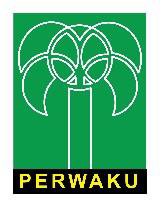Analysis of flood-prone areas in DKI Jakarta Province using Clustering Method
Abstract
ABSTRAK
Tujuan penelitian ini adalah untuk mengetahui pola dan penataan wilayah terdampak banjir di Jakarta. Dataset kejadian banjir di Provinsi DKI Jakarta tahun 2020 dijadikan sebagai sumber data penelitian ini. Penelitian ini menggunakan tiga metode: K-Means, K-Medoid, dan Hierarchical Clustering. Dari ketiga metode tersebut, Hierarchical Clustering menghasilkan pengelompokan terbaik dibandingkan dengan metode lainnya. Temuan penelitian menunjukkan bahwa wilayah terdampak banjir di DKI Jakarta diklasifikasikan menjadi tiga kelompok: aman (kluster 1), sedang (kluster 2), dan rentan (kluster 3). Kecamatan Cengkareng, Jatinegara, dan Pulogadung termasuk wilayah yang rentan.
Keywords
References
Abidin, H. Z., Andreas, H., Djaja, R., Darmawan, D., & Gamal, M. (2008). Land subsidence characteristics of Jakarta between 1997 and 2005, as estimated using GPS surveys. GPS Solutions, 12: 23-32.
Alashwal, H., El Halaby, M., Crouse, J. J., Abdalla, A., & Moustafa, A. A. (2019). The application of unsupervised clustering methods to Alzheimer’s disease. Frontiers in Computational Neuroscience, 13: 31.
Alfahmi, F., Hakim, O. S., Dewi, R. C., & Khaerima, A. (2019). Utilization of data mining classification techniques to identify the effect of Madden-Julian Oscillation on increasing sea wave height over East Java Waters. IOP Conference Series: Earth and Environmental Science, 399(1): 012062.
Budiyono, Y., Aerts, J. C., Tollenaar, D., & Ward, P. J. (2016). River flood risk in Jakarta under scenarios of future change. Natural Hazards and Earth System Sciences, 16(3): 757-774.
Duykers, J. L., Ardana, K., Yulistiani, R., Irwansyah, E., & Fitrianah, D. (2023). Identifying Factors for Supporting Early Warning Flood using Clustering Approach and Geo-Spatial Analysis. Procedia Computer Science, 227: 540-547.
Erraguntla, M. et al. (2014). Data Mining to Improve Safety of Blood Donation Process. 47th Hawaii International Conference on System Sciences, Waikoloa, HI, USA, 2014, pp. 789-795, doi: 10.1109/HICSS.2014.105.
Grira, N., Crucianu, M., & Boujemaa, N. (2004). Unsupervised and semi-supervised clustering: a brief survey. A Review of Machine Learning Techniques for Processing Multimedia Content, 1(2004): 9-16.
Hadi, S., Fitrianah, D., Ayumi, V., & Lim, S. M. (2023). The Data Analysis of Determining Potential Flood-Prone Areas in DKI Jakarta Using Classification Model Approach. International Journal of Application on Sciences, Technology and Engineering, 1(1): 347-357.
Hall, M. J., Minns, A. W., & Ashrafuzzaman, A. K. M. (2002). The application of data mining techniques for the regionalisation of hydrological variables. Hydrology and Earth System Sciences, 6(4): 685-694.
Herman, E., Zsido, K. E., & Fenyves, V. (2022). Cluster analysis with k-mean versus k-medoid in financial performance evaluation. Applied Sciences, 12(16): 7985.
Istiadi, Y., & Priatna, D. (2021). Analysis of the determinants and typology of hydrometeorological disaster in Sukajaya Subdistrict, Bogor Regency, West Java, Indonesia. Indonesian Journal of Applied Environmental Studies, 2(1): 41-46.
Kaur, N. K., Kaur, U., & Singh, D. (2014). K-Medoid clustering algorithm-a review. Int. J. Comput. Appl. Technol, 1(1): 42-45.
Lackovic, M., Talia, D., & Palopoli, L. (2014). Service-Oriented workflows for distributed data mining applications (Doctoral dissertation).
Liu, C. R., Gibbs, C., & Coady, Y. (2005). SONAR: Customizable, Lightweight Tool Support to Prevent Drowning in Diagnostics. In RAM-SE'05, 2nd ECOOP Workshop on Reflection, AOP and Meta-Data for Software Evolution.
Lyons, Sthepanie. (2015). The Jakarta floods of early 2014: Rising risks in one of the World’s fastest sinking cities. Liège Université, Viewed 15 October 2018.
Maghakian, C., Navratil, O., Zanot, J. M., Riviere, N., & Honegger, A. (2023). Drowning incidents in urban rivers: An underestimated issue with future challenges in need of an interdisciplinary database to characterise its epidemiology. Environmental Challenges.14. 100822. 10.1016/j.envc.2023.100822.
Napier, J. (2021). Living with Water: Infrastructure and Urbanism in Jakarta. Ecocycles, 7(1): 52-72.
Padawangi, R., & Douglass, M. (2015). Water, water everywhere: Toward participatory solutions to chronic urban flooding in Jakarta. Pacific Affairs, 88(3): 517-550.
Putri, D. P. (2018). UTILIZING DATA MINING IN GETTING INFORMATION FOR VEHICULAR USERS IN INDONESIA. International Research Journal of Computer Science (IRJCS), 11(5): 525-535
Rafindadi, A. D., Shafiq, N., Othman, I., Ibrahim, A., Aliyu, M. M., Mikic, M., & Alarifi, H. (2023). Data mining of the essential causes of different types of fatal construction accidents. Heliyon, 9(2).
Salim, W., Bettinger, K., & Fisher, M. (2019). Maladaptation on the waterfront: Jakarta’s growth coalition and the Great Garuda. Environment and Urbanization Asia, 10(1): 63-80.
Shetty, P., & Singh, S. (2021). Hierarchical clustering: a survey. International Journal of Applied Research, 7(4): 178-181.
Sinaga, K. P., & Yang, M. S. (2020). Unsupervised K-means clustering algorithm. IEEE Access, 8: 80716-80727.
Sudirman, A. P., Windarto, & Wanto, A. (2018). Data Mining Tools | RapidMiner : K-Means Method on Clustering of Rice Crops by Province as Efforts to Stabilize Food Crops In Indonesia. IOP Conference Series: Materials Science and Engineering, 420(12089): 1-8,.
Supriyadi, B., Windarto, A. P., & Soemartono, T. (2018). Classification of natural disaster prone areas in Indonesia using K-means. International Journal of Grid and Distributed Computing, 11(8): 87-98.
Sutrisno, D., & Windiastuti, R. (2013). The impact of sea level rise to public health: Spatial assessment approach for Jakarta. Research Journal in Engineering and Applied Sciences, 2(2): 152-159.
Utami, W., Wibowo, Y. A., Hadi, A. H., & Permadi, F. B. (2021). The impact of mangrove damage on tidal flooding in the sub district of Tugu, Semarang, Central Java. Journal of Degraded and Mining Lands Management, 9(1): 3093.
Ward, P. J., Budiyono, Y., & Marfai, M. A.: Flood risk in Jakarta, in: Severe Weather in Eastern Asia, Perils, Risks, Insurance. Munich Re Knowledge Series Natural Hazards, 106–107.
Wijayanti, P., Zhu, X., Hellegers, P., Budiyono, Y., & van Ierland, E. C. (2017). Estimation of river flood damages in Jakarta, Indonesia. Natural hazards, 86: 1059-1079.
DOI: 10.33751/injast.v5i1.10259
 Abstract views : 290
Abstract views : 290
Refbacks
- There are currently no refbacks.
Copyright (c) 2024 Indonesian Journal of Applied Environmental Studies

This work is licensed under a Creative Commons Attribution-NonCommercial-ShareAlike 4.0 International License.













